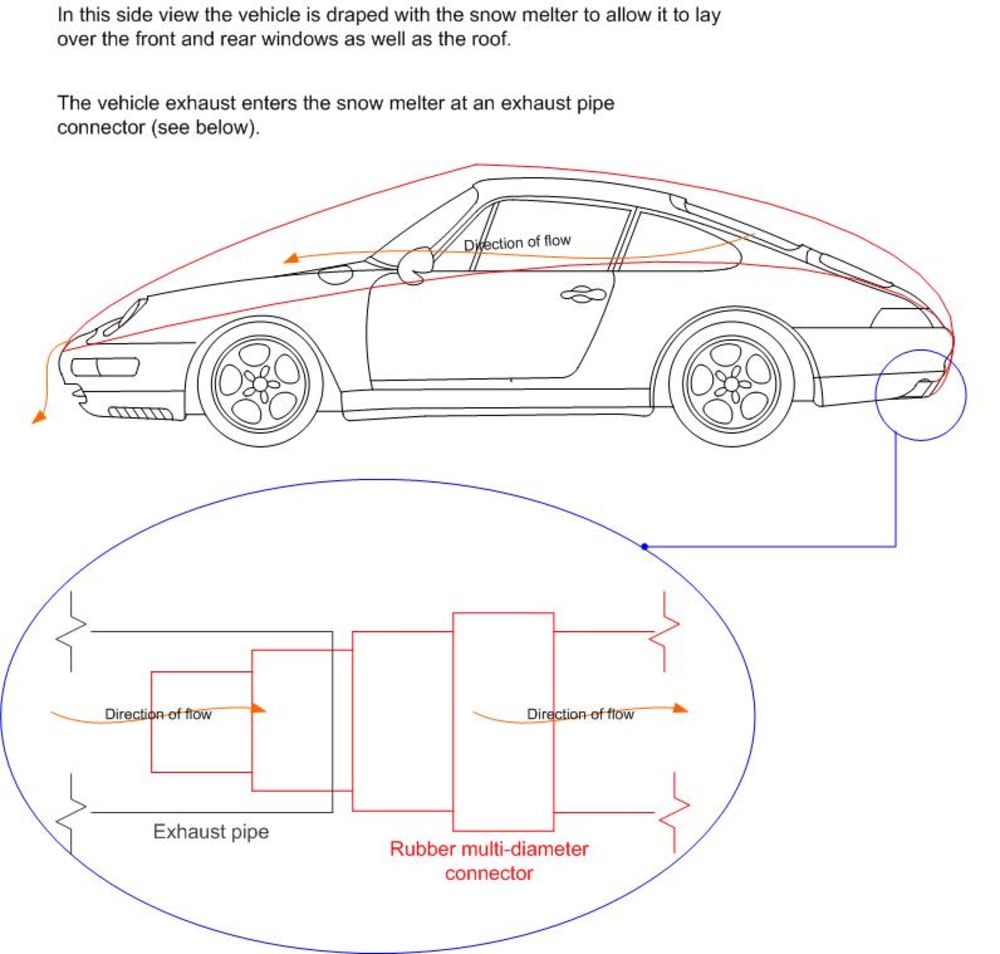New Jersey has instituted a law in which vehicles must have snow and ice removed from the hood, roof, and truck areas. This law is extremely important to all motorists driving in winter weather conditions where snow or ice can fall from one vehicle and onto another causing damage to vehicles and/or loss of visibility leading to serious accidents. As a New Jersey motorist myself, I have been hit by large pieces of snow or ice and clearly understand the importance of this regulation. However, some drivers may not the ability to clear their vehicle completely of snow and ice due to the height or size of the vehicle. Additionally, some drivers may find clearing the roof of a vehicle extremely difficult due to their agility or mobility.
Rather than trying to remove snow and ice by conventional methods of scraping, shoveling, and brushing, a device that melts the snow and ice using the vehicles exhaust makes life easier for regular and even commercial drivers.
The snow melt system consists of an attachment point to the car’s exhaust piping allowing exhaust to travel through a thin Mylar bladder heating the snow and ice from the rear to the front of the vehicle. Exhaust would exit the bladder through ports at the front of the vehicle. This system provides enough heating potential to melt snow and ice during the car’s 10 to 15 minute warm-up period that most northern drivers allow for each morning.
The bladder would easily drape over any sized car, truck, or van similarly to a car cover utilizing elastic to keep the bladder in place during windy conditions. The materials are inexpensive, the design is simple, the system utilizes rejected heat not otherwise used, and the results are great.
The common temperature of vehicle exhaust is approximately 500F depending on the fuel. The approximate flow rate is 115 CFM at 5 psi. These data provide sufficient heating potential to remove 18,400 cubic inches snow in 15 minutes during the normal warm-up time of a vehicle in winter months.
The amount of energy required to raise the temperature of snow from 22F to above 32F melt snow is 144 btu per pound of snow. This system can melt approximately 8" of snow (or 1 lb of snow/cuft ) on a 4' x 4' car roof, or ~221,100 btu of heating required. A 200 hp car produces ~500,000 btu/hour of heat, which would provide an excess of ~300,000 btu. Some of this heat would be lost to the environment and the materials of the system, but would melt snow and ice effectively and efficiently.
This system can be modified for buses, tractor trailers, motor homes, and other large vehicles where clearing rooftops is difficult and time consuming.
The system can be re-used by rolling it up and storing it in a canvas bag that comes with it.
Like this entry?
-
About the Entrant
- Name:Peter Koza
- Type of entry:individual
- Software used for this entry:AutoCad 2000, MS Visio
- Patent status:none








